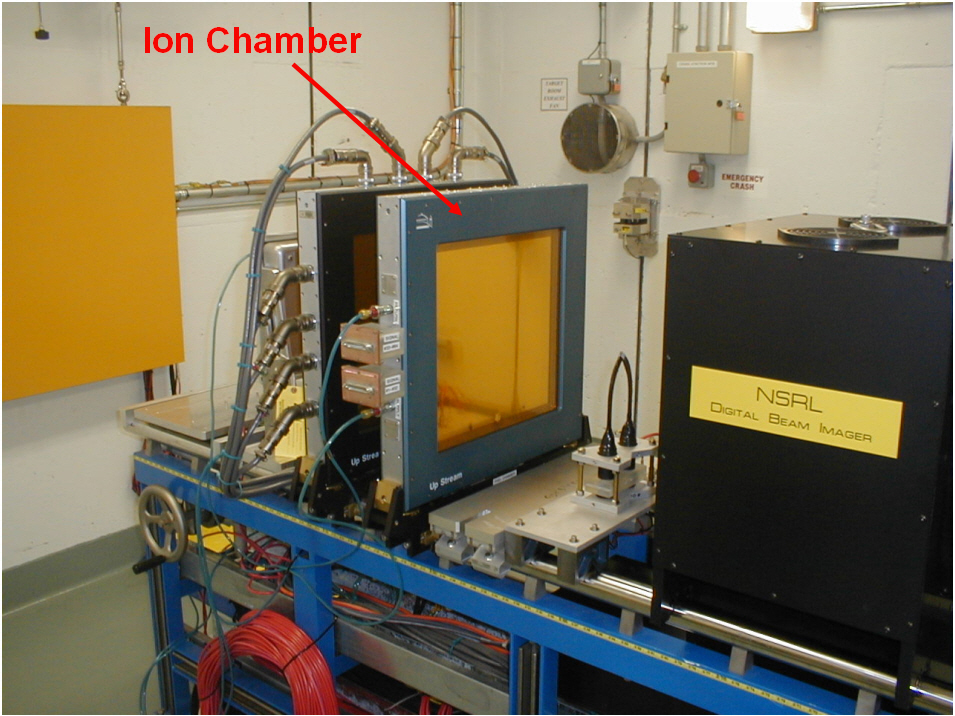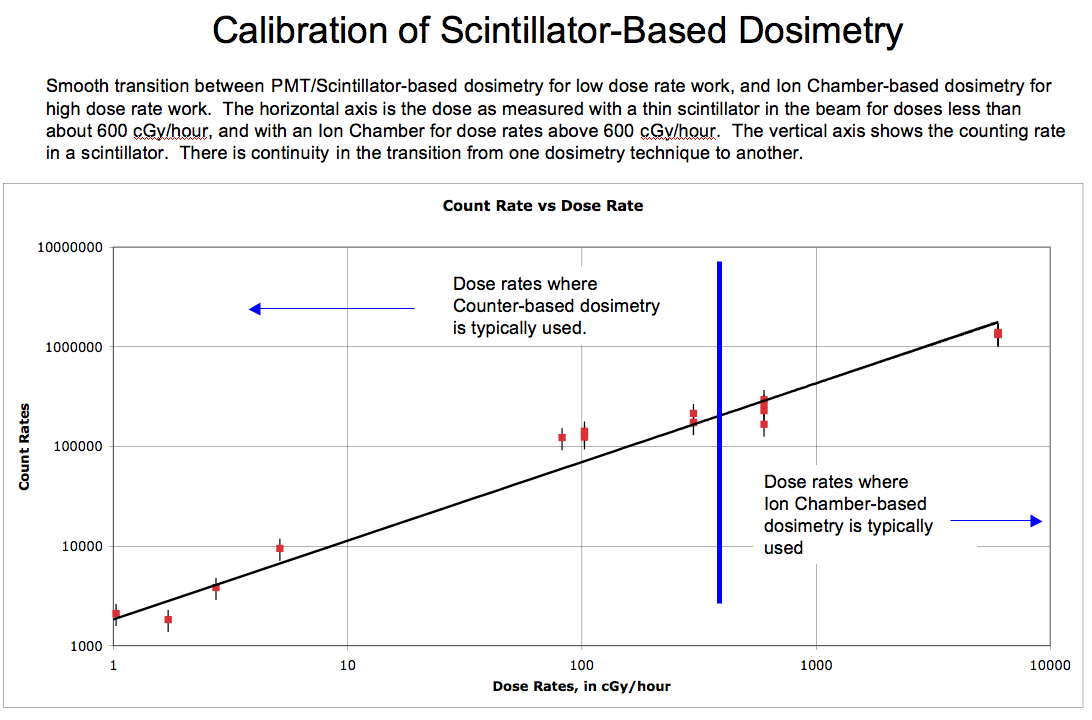NSRL User Guide: Biology Experiments
III. Technical Data
Dosimetry Calibration
Dosimetry Calibration: Primary Ion Chamber
The primary method of calibrating the dose delivered at NSRL is via a small ion chamber called a "Calibration Ion Chamber" (aka EGG counter) produced by Far West Technology. This is an air-filled bulb with electrodes for collecting ionization inside a tissue-equivalent plastic cap. The Calibration Ion Chamber is sent back to the manufacturer yearly to be calibrated using a standard gamma ray source (Cs-137). The calibration is based on a standard defied by the International Commission on Radiation Units and Measurements (ICRU) and reported in their ICRU Report 59, 15 December 1998.
The Calibration Ion Chamber is mounted on a dual axis drive that allows for the remote placement of the device. The set-up is pictured below.

Dosimetry Calibration: Secondary Ion Chamber
Before each set of exposures, after the beam has been tuned, the Calibration Ion Chamber is used to measure the dose delivered by the beam at the same time as a series of large ion chambers (ICs) is being read out. This reading serves to transfer the calibration to the large ion chambers. These large ICs remain in the beam just upstream of the samples (in most cases) during exposures. It is these secondary ion chambers that are used to measure the integrated dose delivered, and also cut off the beam when the requested total dose has been reached.

Dosimetry Calibration: Secondary Ion Chamber with Gain
Ion chambers are used for on-line dose measurement and beam monitoring. When running at dose rates that are too low to produce an image in the Digital Beam Imaging Camera, an ion chamber with gain is used to image the beam. This ion chamber can also be used to measure total dose as well. The contour plots below show the performance of the high gain ion chamber when running low flux beams of protons or Fe.
![]()
Dosimetry Calibration: Scintillator Based Dosimetry
At the lowest fluences, plastic scintillators are used to count individual particles in the beam. From these counts, a total delivered dose is calculated.



